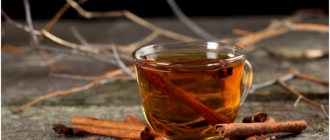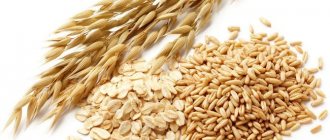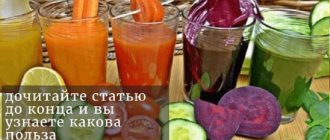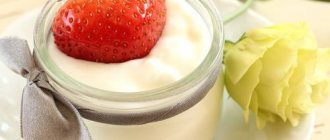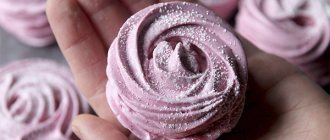It is important for a diabetic to pay attention not only to the food, but also to the drinks he drinks. Juice containing a large amount of sugar can do a very bad job. Tea is the safest, and often also beneficial, drink for people with diabetes.
Diabetes mellitus is a disease of the body that occurs due to a lack of production of the hormone insulin. Insulin is a hormone that regulates glucose levels in human blood. Most diabetics have to severely restrict their diet due to this disease.
Types of tea and its beneficial properties
There are many different varieties and species in the world. People choose tea based on the taste, color and aroma of the infusion, which largely depends on the method and duration of processing of the tea leaves.
This is how groups are distinguished according to the type of fermentation:
- Black tea. It undergoes the longest processing for weeks, or even months, and is the most oxidized (80%).
- Puer. First, green tea is brought to oxidation, after which it is fermented for several years (in the case of natural aging), after which the degree of oxidation can reach several tens. With artificial aging it takes less time, but in terms of oxidation it always exceeds oolong.
- Oolong. It can be oxidized for about two or three days to 30-70%.
- White tea. After treatment, it has oxidation within 12%.
- Yellow tea. It oxidizes quite a bit: only 3-12%, like green, only before drying it is subjected to closed “simmering”.
- Green tea. It practically does not go through the oxidation procedure, therefore it has the lowest degree of oxidation. (3-12%)
Black tea
In Russia, tea is practically considered a national drink. Black became the most widely known. This type is easier to brew than all others, has a pleasant taste that is not overpowered by sugar or lemon, like green. On the contrary, black tea goes perfectly with the listed components.
It is recognized as the safest for people with diseases of the cardiovascular system, and is indicated for hypertensive patients. Black tea reduces the likelihood of developing heart disease, including atherosclerosis, stroke and heart attack. Also, when brewed regularly, it strengthens the enamel, protecting against caries. And it is this type that helps reduce the risk of diabetes.
Constant use improves immunity, has a positive effect on the gastrointestinal tract, kidneys and the entire urinary-excretory system, and on the condition of the oral cavities. In addition, it has an immeasurable effect on the brain, restoring nerve cells, improving mood and giving an invigorating effect.
According to scientists, it is black tea, due to its saturation with antioxidants, namely tannins, vitamins A and E, that slows down the aging process of cells, which is why the skin retains its elasticity and healthy color for a long time.
Read: What are the benefits of bananas for the health, youth and beauty of women?
Green tea
Due to the low degree of processing, it is recognized as the most useful and least caloric, therefore it is highly valued among adherents of a healthy lifestyle.

Green tea reduces the risk of cancer and is useful for people with high blood pressure. It has a powerful antiviral effect, which contributes to the rapid treatment of colds.
Even in small quantities it helps speed up metabolism and remove toxins from the body, while having a beneficial effect on the digestive system. Has a positive effect on the condition of nails and hair.
Interesting fact: researcher S. Ya. Berdyeva confirmed in 1955 that green tea is effective in the treatment of typhoid fever and dysentery.
Pu'er
In China, it is recognized as a drink of beauty and health. For a long time it was used as a cure for “a hundred diseases.”
One mug of this tea can replace a liter of energy drinks or two cups of coffee. It is believed to contain more caffeine than any other form.
Pu-erh, like green tea, promotes weight loss and also has a rejuvenating effect, improving skin condition. It perfectly fights bad breath and generally has a positive effect on the oral cavity.

One of the distinctive beneficial properties of this type is appreciated by “avid party-goers”, because Pu-erh saves you from a hangover.
White tea
Even in ancient times, white tea had a special value; it was forbidden to take it outside the imperial palace, and not everyone could afford it.
In modern times, white tea has found many consumers. It is widely used in winter, as it helps bring the body back to normal, increasing tone. And in hot weather, thanks to essential oils, it quickly quenches thirst.
Doctors in Germany have confirmed that white tea, like green tea, can promote more effective weight loss. Has a beneficial effect on digestion if you drink a little after meals.
Often used in the manufacture of cosmetic products. White tea-based cream smoothes wrinkles, helps fight cellulite, eliminates stretch marks and other skin damage, tidying up the skin.
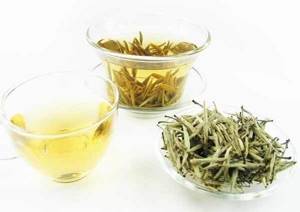
Other types of tea have less pronounced, but similar characteristics to those described above. Each of them has a unique taste. It's worth trying each one in your life to fully understand all their positive and negative sides.
Cancer protection
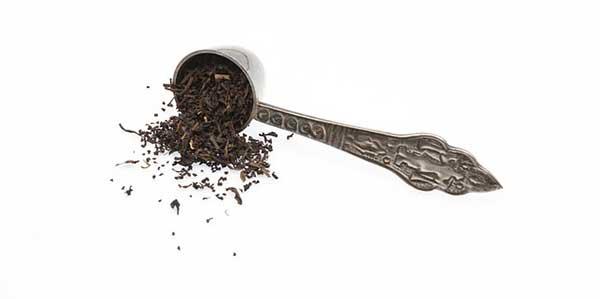
Black tea contains a lot of flavonoid antioxidants (catechin, epicatechin, kaempferol and myricetin). All these compounds are necessary to reduce the risk of developing malignant tumors.
In addition, the drink contains the substance teflavin-3. In 2016, it was discovered that it can destroy cancer cells that are resistant to the action of the most powerful broad-spectrum anti-cancer drug, cisplatin.
Moreover, while cisplatin often kills not only diseased cells, but also healthy ones, teflavin-3 destroys only degenerated ones.
The drink itself cannot be considered a real anti-cancer agent. There is not much Teflavin-3 in it. However, it is useful as a prevention of cancer.
Calorie content of tea and its additives
| Name | Calorie content per 100 ml/indicated amount |
| Black | 3-5 |
| Green | 1 |
| White tea | 3-4 |
| Yellow tea | 2 |
| Pu'er | 2-4 |
| Oolong | 1 |
| Hibiscus | 5 |
| Mate | 1-2 |
| Rooibos | 1 |
| Fruit tea | 5-10 |
| In bags | 2,8-10 |
| Honey (1 tablespoon) | 64 |
| Sugar (1 teaspoon) | 16 |
| Lemon (juice, 1 teaspoon) | 1-3 |
| Skim milk (1 tablespoon) | 5 |
| Whole milk (2 teaspoons) | 6 |
| Cream (1 tablespoon) | 20-50 |
| Dry cream (1 teaspoon) | 15 |
| Condensed milk (1 teaspoon) | 40 |
Read: The benefits of flounder for the gastrointestinal tract, heart, blood vessels and brain
Harm of tea, who should not drink the drink
Despite all the beneficial properties of tea, it can be harmful to some people. They should reduce their consumption or completely eliminate tea from their diet.
Patients with atherosclerosis and hypertension (severe). People with these diseases are advised to refrain from drinking the drink during an exacerbation, since tea can lead to vasoconstriction and the formation of blood clots due to the high content of caffeine and theophylline.
Suffering from insomnia. Those who have trouble sleeping should not drink strong tea before bed. The previously mentioned caffeine greatly excites the nervous system, which can make it extremely difficult to fall asleep.
Pregnant women. Taking into account the data found by Japanese researchers, daily consumption of up to 5 cups per day can lead to underweight in an infant, since caffeine in any form adversely affects the development of the fetus.
Recommended video:
https://www.youtube.com/watch?v=zYc8VDPHp3k
Patients with ulcers. Tea helps the functioning of a healthy digestive tract, but for patients with ulcers, the drink can cause irreparable damage. Theophylline interferes with the work of phosphoric acid, resulting in increased acidity in the stomach. In such a situation, it is less dangerous to drink pu-erh or tea with milk.
At high temperature. In a person with a high temperature, the surface of blood vessels expands, sweating increases, which leads to an imbalance in water balance and loss of nutrients. Tea has a diuretic effect and also promotes energy production, which can only make the condition worse.
Beneficial effect on the psyche
- Cheerfulness . One cup of black tea, depending on the strength of the brew, contains from 14 to 70 mg of caffeine. Even a decaffeinated drink contains 12 mg of this substance per cup. Caffeine interferes with the effects of adenosine on the brain. And thanks to this, it helps to increase concentration and mental activity.
- Elimination of excessive nervous excitement. Despite the fact that tea contains a lot of caffeine, this drink can relieve stress as it lowers the level of the hormone cortisol. It has been established that those people who regularly drink this drink recover faster after any stressful event than those who neglect tea.
What tea to drink when losing weight
Quite a number of special teas have already been developed to reduce body weight. They differ in the way they affect the body.
- Cleansing tea. Starts metabolism and gives a laxative effect.
- Diuretic. In fact, it is a natural diuretic. It helps remove excess water, but overusing this tea is dangerous, as it can lead to dehydration. Which will only disrupt the water balance and functioning of the body.
- Fat burning. The most effective of all, as it gives results not just for one day, but for a longer period. It differs in that it stimulates not organ systems, but the cells themselves, increasing the temperature inside them. This way you can really burn extra calories and speed up your metabolism.

To safely lose weight and benefit your body, it is better to drink natural teas, such as pu-erh or classic green tea without sugar or milk. Lemon, ginger and cinnamon have always been active natural fat burners; when added, tea acquires a new aroma and taste.
Read: Loquat is a fruit known as a traditional medicine
Herbal tinctures help. You can make them yourself: mix half a teaspoon of mint, fennel and parsley in a container. Then add a teaspoon of buckthorn and pour in 500 ml of water. It is recommended to drink half a glass before meals. The result will appear in a week.
There are also artificially created teas for weight loss. On the shelves of any pharmacy you can buy:
- "Super slim."
- "Turboslim".
- "Pohudin" ().
- "Flying Swallow"
- "Monastic".
- "Altai 3".
The main advantage of the above products is their ease of use. Most weight loss teas are available in granules or bags, which significantly reduces brewing time.
Why is there a problem with sugar?
Scientists have long established that our prehistoric ancestors were by no means stupid creatures. Other than us, but at the same time, even if their medicine was not as developed as ours, they have enough problems of their own, both we have and they have enough. But they were healthier than us. Even in terms of subcutaneous fat. They did not have it as much as modern man has. And why all?
Yes, because they did not juice cane sugar or sugar-containing products. In their time there were no concentrated sweet substances that could make water sweet. In their times there were only fruits and vegetables. But you can’t eat tons of them. Today in India, rice porridge mixed with sweet banana is still considered a dessert in some regions. What is considered dessert in our country? That's right: cakes, pastries, ice cream, cookies and other sugar-containing products.
Back then, people didn’t even know that such products would exist. And today they are on every corner. Today, people have become even fatter than before, and in addition to the problem of excess weight, the following has arisen - how to lose it?
What kind of tea can children drink?
You can start introducing loose leaf tea into your child’s diet no earlier than 2 years, when there is complete confidence that this will not affect eating behavior in any way, and all internal systems are in a stable state.
It is necessary to take into account that even then the tea cannot be made strong; serve no more than 100-150 ml. Green tea is preferable because it retains the most nutrients after fermentation.
Children aged 7-8 years can drink any tea, but it is not recommended to drink strongly brewed tea. It has long been established that tea steeped over a long period of time can cause intoxication. A young body is more susceptible to irritants. When intoxicated by tea, a person feels tired and heavy in the limbs, dizzy, and even hallucinations are possible.
For children
Is tea good for children? Many parents ask this question. It is better to drink tea without additives and avoid added sugar. Drinking a large amount of tea contributes to the excitability of the child’s nervous system. Therefore, you should avoid giving him tea at night.
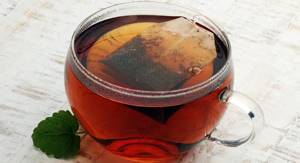
The baby may not sleep well after drinking the drink, which also negatively affects the parents. As with adults, you need to know when to stop and not give your child too much tea.
What tea can you drink for gastrointestinal diseases?
People suffering from gastritis are strictly contraindicated to drink tea, due to the caffeine and theophylline it contains. However, if you choose the right herbs and drink the drink in moderation, it will promote recovery and will be a pleasant addition to the course of treatment.

Ulcer sufferers and people with diseases of the duodenum need to know which components can increase acidity in the stomach. These include:
- Ginger.
- Lemon.
- Plantain, etc.
For diseases of the gastrointestinal tract, doctors insist on drinking green tea or mono-teas. Green tea, like all others, increases the secretion of the gastric glands, but it does this more gently than black or pu-erh.
For gastritis, peptic ulcers, inflammation in the stomach or intestines and difficulty in their functioning, it is recommended to drink mono teas. When mixing certain substances that are contained in different components of tea, there is also a high risk of increasing acidity, so it is safer to use only one main component:
- Chamomile.
- Mint.
- Calendula.
- Flax-seed.
- Anise.
- Linden blossom.
Each organism is individual, so in any case, before changing the diet, those suffering from gastrointestinal diseases should consult a doctor.
Recommended video:
Read along with this article:
- Useful information about granulated sugar: calorie content, benefits and harm
- Is dried fruit compote really healthy?
- Goji berries - calories, beneficial properties
- Kombucha - what is it, how to grow and use it correctly...
- What vitamins in lemon help maintain beauty and...
- Healing properties of linden honey: calorie content, at what…
- Beneficial properties of hemp and its effect on the gastrointestinal tract
- What are the benefits of black pepper and can everyone use it?
- What is cow colostrum, the benefits and harms of the product
